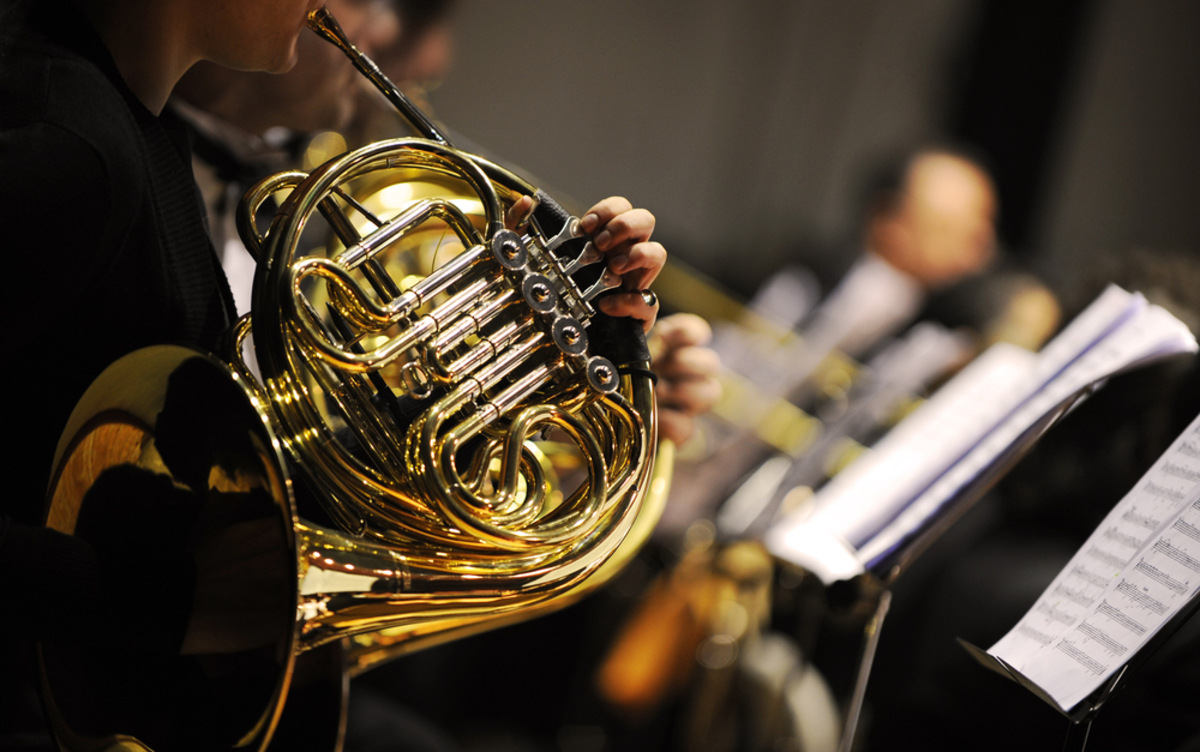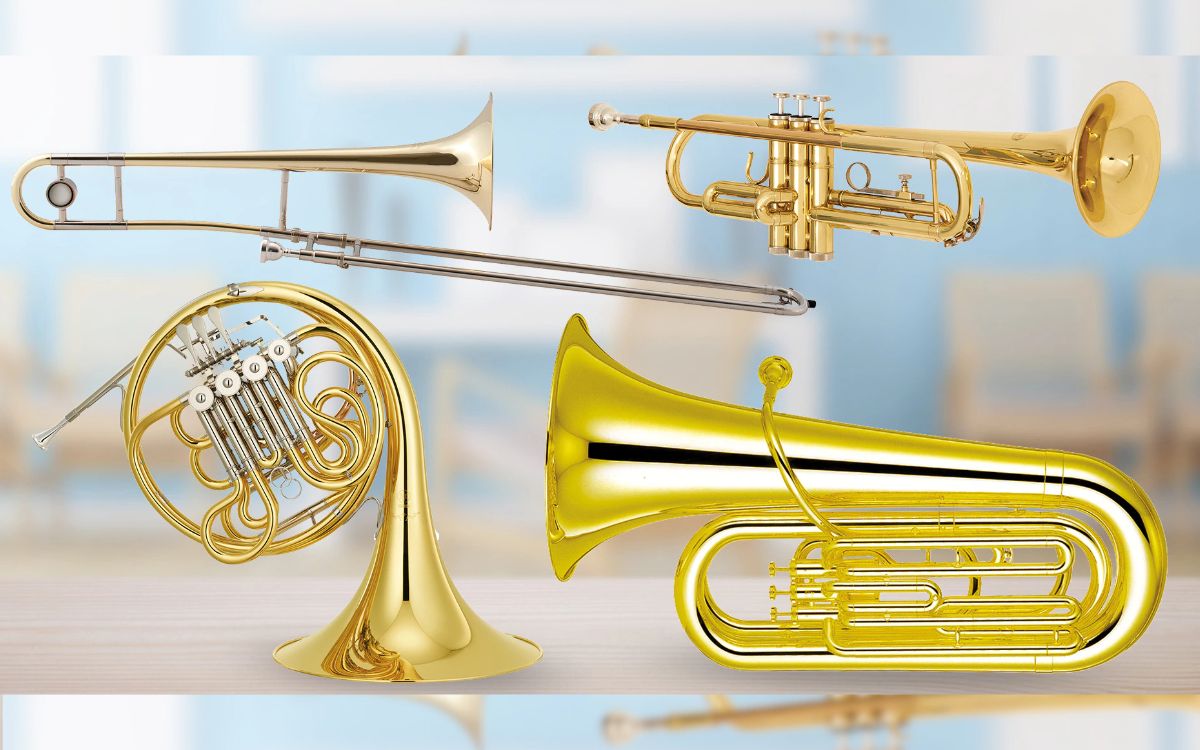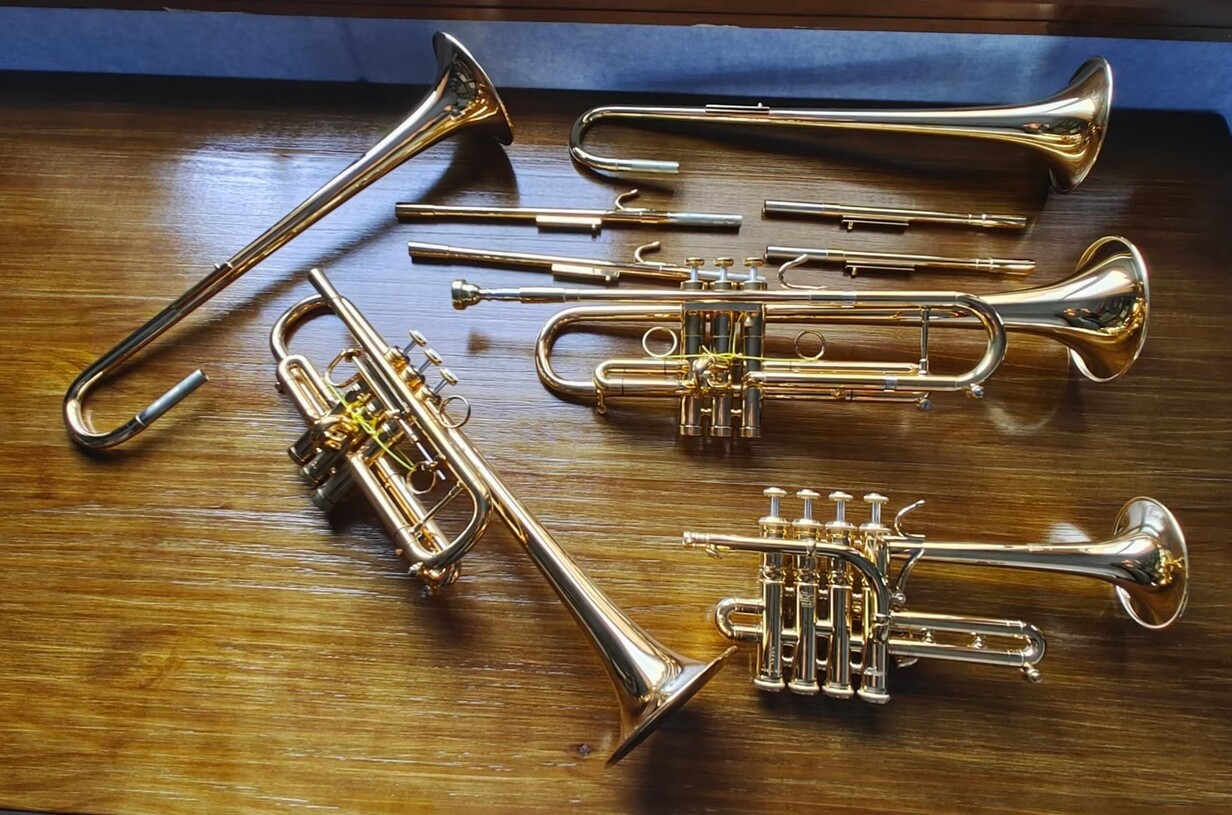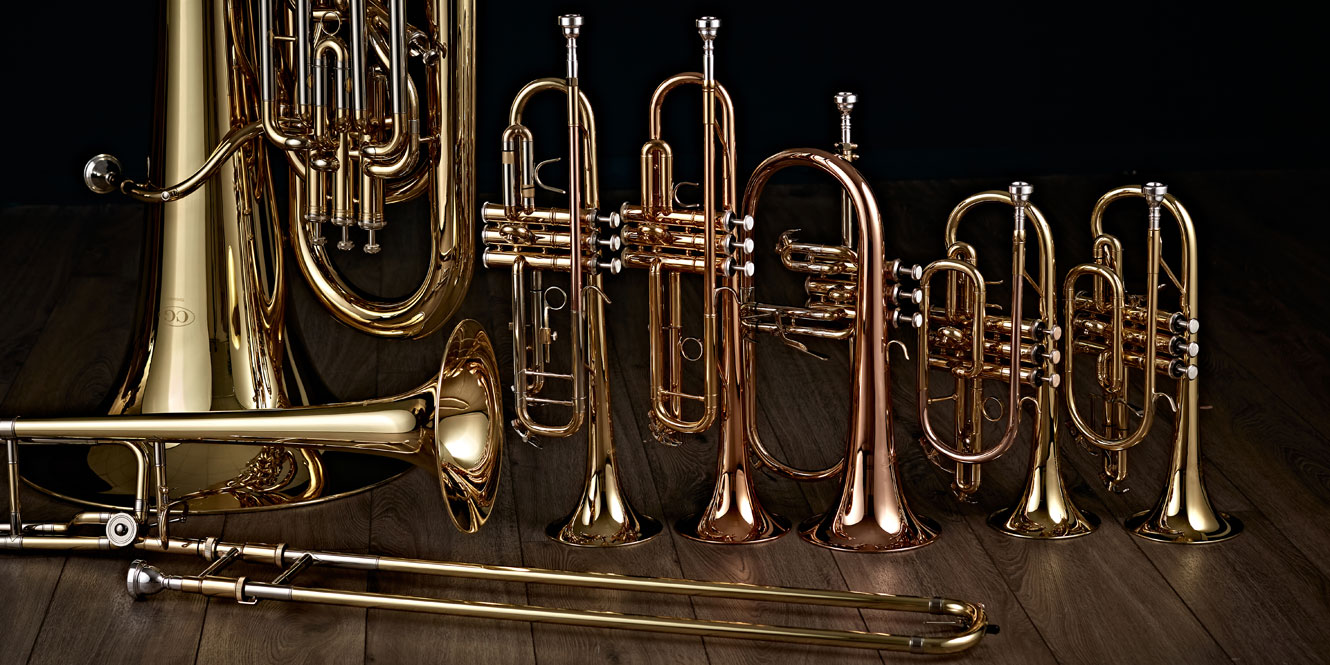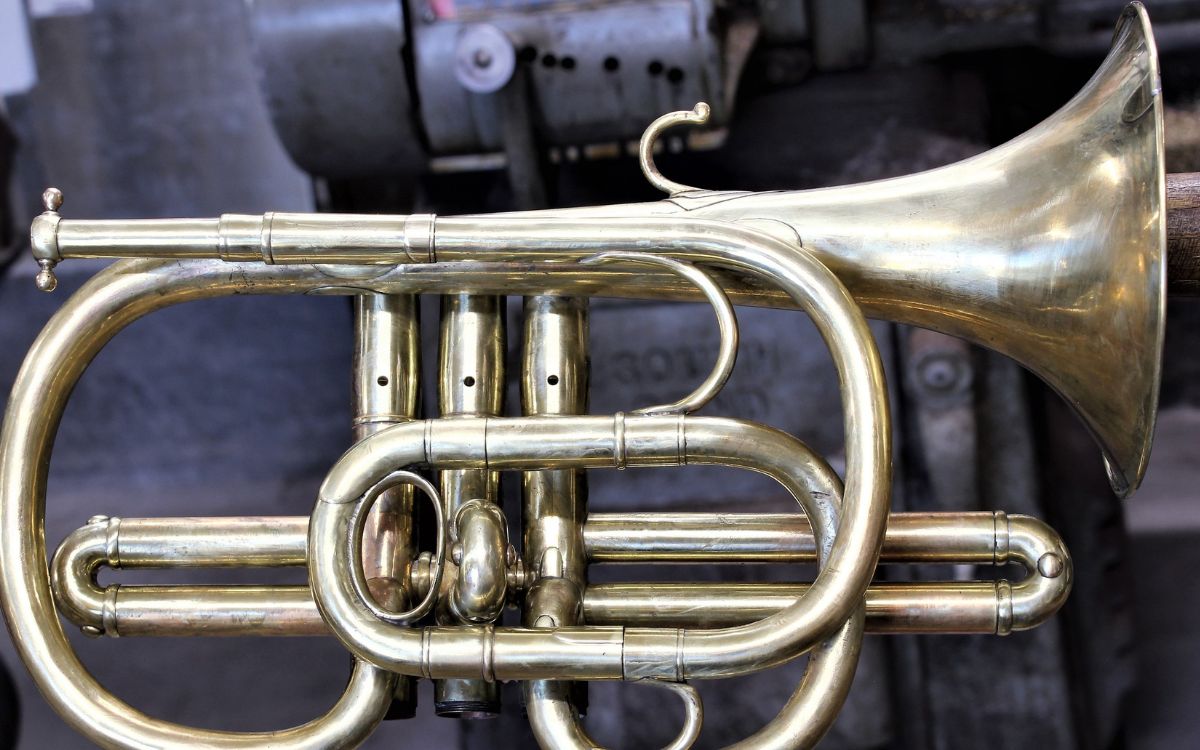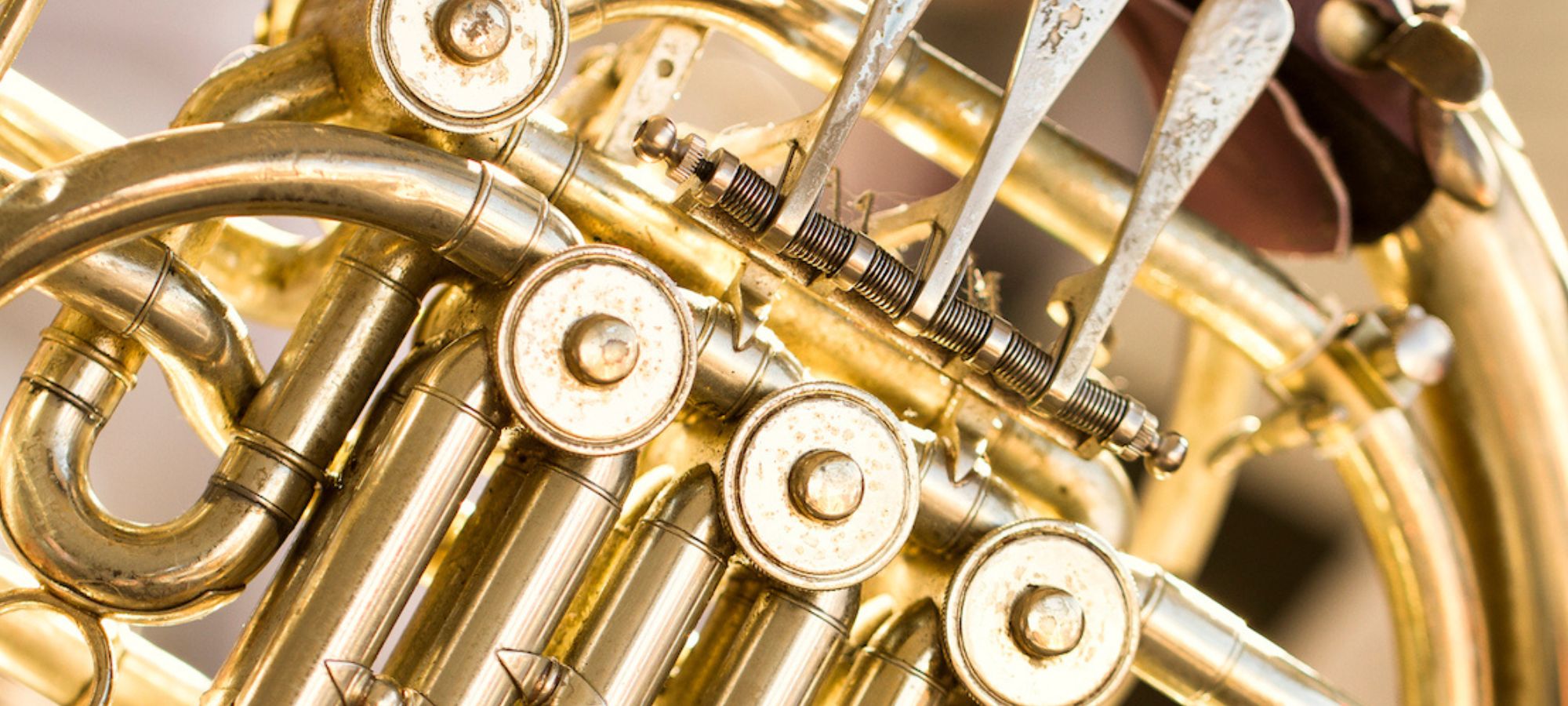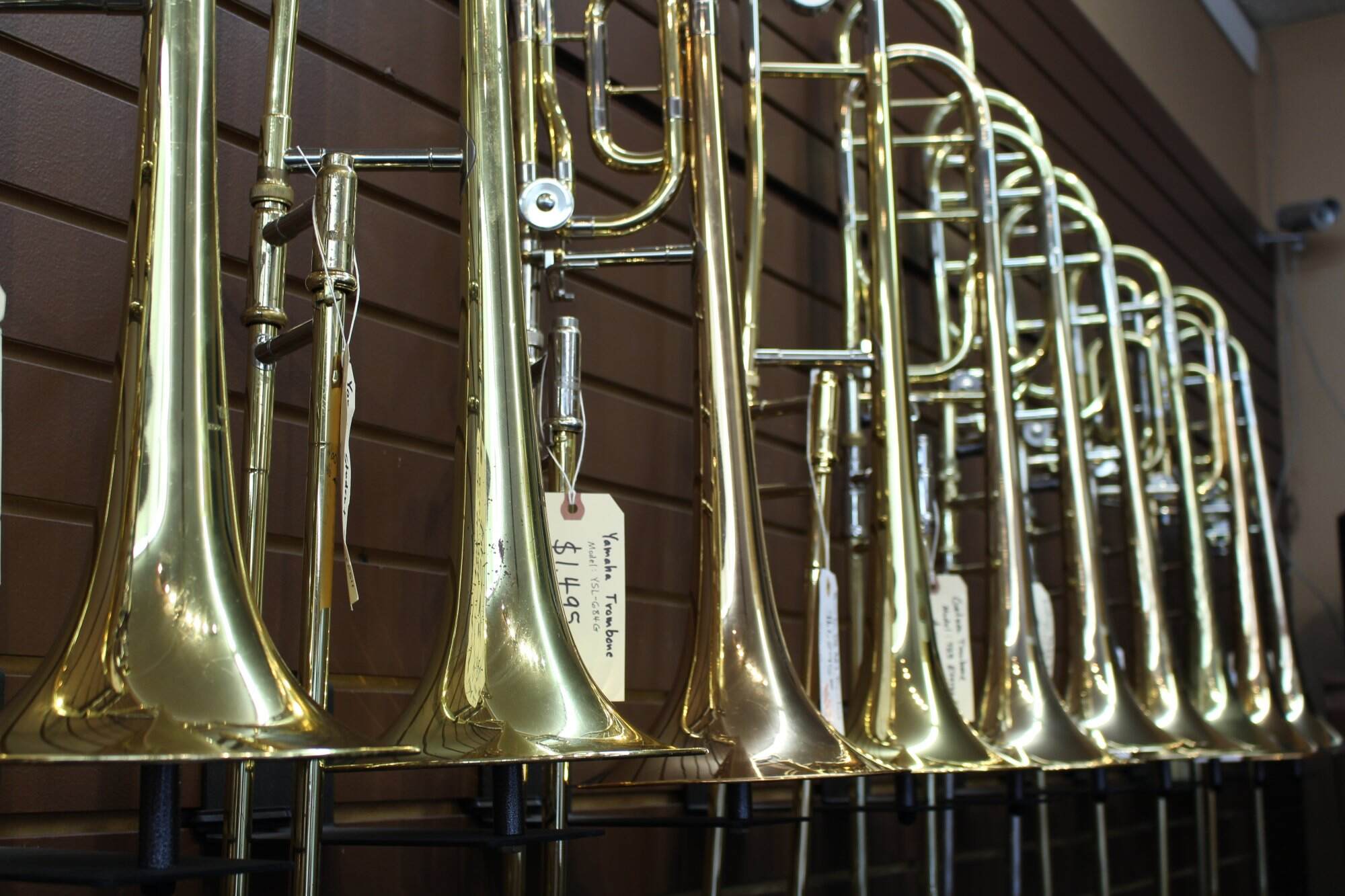Home>Instruments>Brass Instruments>How Brass Instruments Work For Kids
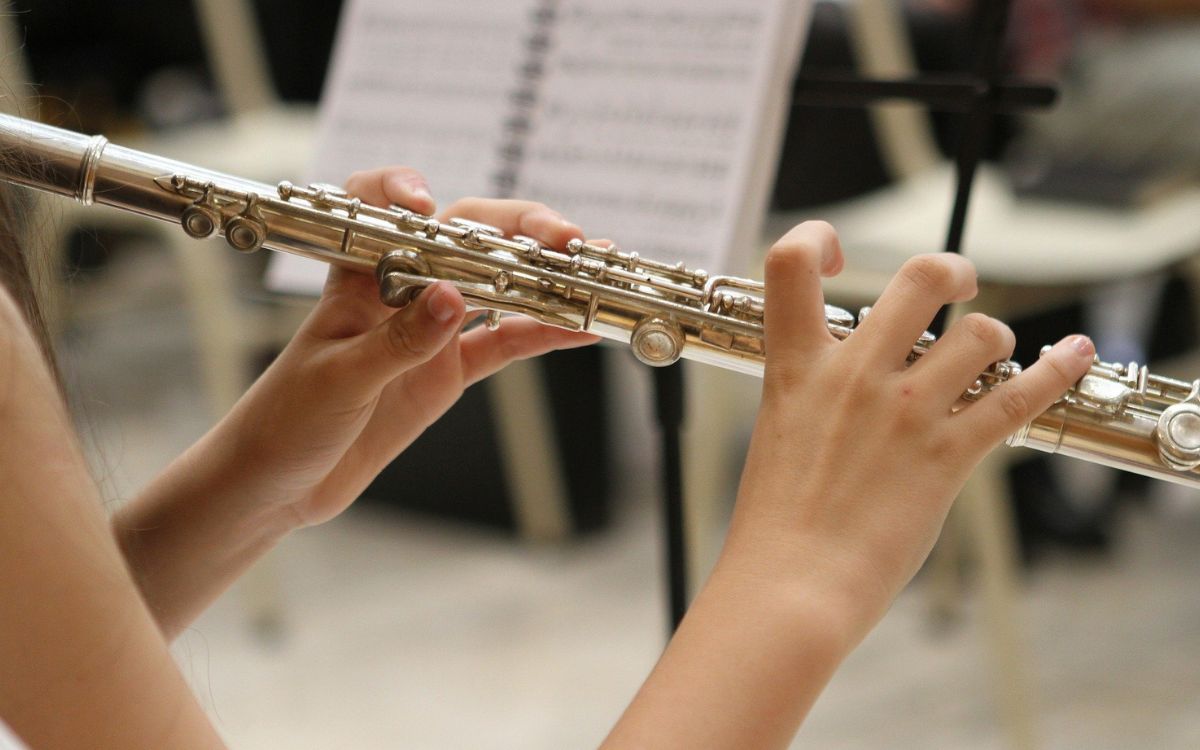

Brass Instruments
How Brass Instruments Work For Kids
Modified: January 22, 2024
Discover how brass instruments work and learn about the different types. Engage kids with the fascinating world of brass instruments.
(Many of the links in this article redirect to a specific reviewed product. Your purchase of these products through affiliate links helps to generate commission for AudioLover.com, at no extra cost. Learn more)
Table of Contents
Introduction
Welcome to the exciting world of brass instruments! Whether your child is interested in playing the trumpet, trombone, French horn, or any other brass instrument, they are about to embark on a musical journey that will bring joy and creativity to their lives. In this article, we will explore the fascinating world of brass instruments, how they work, and how your child can get started playing them.
Brass instruments are unique in their ability to produce rich and powerful sounds. They are commonly used in a variety of musical genres, from classical and orchestral music to jazz, pop, and marching bands. The distinctive sound of brass instruments adds depth and character to any musical composition.
If your child is intrigued by the idea of playing a brass instrument, it’s important to have a basic understanding of how they work. Brass instruments require the player to create sound by buzzing their lips into a cup-shaped mouthpiece. The vibrations of the buzzing lips, combined with the manipulation of valves or slides, produce different pitches and tones.
Playing a brass instrument not only provides a creative outlet but also offers a range of cognitive and physical benefits for your child. It helps develop their sense of rhythm, improves their breath control and lung capacity, and enhances their hand-eye coordination. Additionally, playing a brass instrument can boost self-confidence, discipline, and teamwork skills through participation in ensembles or bands.
Brass instruments come in various shapes, sizes, and configurations. From the small and compact trumpet to the large and majestic tuba, each instrument has its own unique characteristics and playing techniques. Learning to play a brass instrument requires patience, practice, and dedication, but the rewards are immeasurable.
In this article, we will delve deeper into how brass instruments work, explore the different parts of these instruments, provide tips on how to play them, and discuss the care and maintenance required to keep them in optimal condition. We will also highlight some famous brass instruments and players who have left an indelible mark on the world of music.
So, get ready to be inspired and intrigued by the world of brass instruments. Whether your child is a beginner or already has some experience, this article will serve as a comprehensive guide to help them navigate their musical journey and discover the joy of playing a brass instrument.
What are Brass Instruments?
Brass instruments are a family of musical instruments that produce sound by the vibrations of the player’s lips against a cup-shaped mouthpiece. They are called “brass” instruments because they are typically made of brass or other metal materials. These instruments have a long history and have been used in various musical traditions around the world.
Common types of brass instruments include the trumpet, trombone, French horn, tuba, and euphonium. Each instrument has its own unique characteristics and range of notes. Brass instruments are known for their ability to produce a wide range of tones, from bright and piercing sounds to warm and mellow tones.
The trumpet is one of the most well-known and versatile brass instruments. It is played by blowing air into the mouthpiece and using the fingers to press down on the keys or valves to change the pitch. The trumpet is commonly used in jazz, classical, and contemporary music genres.
The trombone is a brass instrument with a long sliding tube called a slide. By moving the slide in and out, the player can change the length of the tube and produce different notes. The trombone has a rich and powerful sound and is often used in orchestras and marching bands.
The French horn is a brass instrument known for its distinctive coiled shape and complex set of valves. It produces a warm and mellow sound that is often associated with classical music. The French horn is commonly used in symphony orchestras and chamber ensembles.
The tuba is the largest and lowest-pitched instrument in the brass family. It has a deep and resonant sound that adds a strong foundation to any musical ensemble. The tuba is commonly found in brass bands, orchestras, and marching bands.
The euphonium, sometimes referred to as the tenor tuba, is a brass instrument similar to the tuba but smaller in size. It has a mellower sound and is often used in concert bands, brass bands, and chamber music.
Overall, brass instruments are not only visually striking but also capable of producing a wide range of sounds and tones. They require the player to develop strong embouchure technique and breath control to produce the desired musical effects. Learning to play a brass instrument can be a rewarding and fulfilling experience for musicians of all ages and skill levels.
How Do Brass Instruments Make Sound?
Brass instruments produce sound through a process called “buzzing.” When a player blows air into the mouthpiece of a brass instrument, their lips vibrate against the cup-shaped mouthpiece. These vibrations create sound waves that travel through the instrument and are amplified to produce the unique tones and pitches associated with brass instruments.
When a player blows air into the mouthpiece, they create a column of air inside the instrument. The size and shape of the instrument, along with the manipulation of valves or slides, determine the pitch produced. By changing the length of the vibrating air column through valve combinations or slide positions, a player can produce different notes.
The production of sound in a brass instrument is dependent on the player’s embouchure. The embouchure is the position and shape of the player’s lips, tongue, and jaw when blowing into the mouthpiece. It is essential to create the right amount of resistance and airflow to produce a clear and focused sound.
The vibrations created by the buzzing lips are amplified as they travel through the instrument. The shape and design of the instrument, including the length of tubing and the presence of valves or slides, affect the quality and timbre of the sound. The larger the instrument, such as a tuba or a bass trombone, the lower the pitch produced.
The valves or slides on brass instruments play a crucial role in changing the pitch. Valves are used in instruments like the trumpet and French horn, while slides are used in instruments like the trombone. When a valve or slide is engaged or adjusted, it alters the length of the tubing, effectively changing the pitch of the instrument. This allows players to play different notes within the instrument’s range.
Brass instruments also rely on the manipulation of the player’s airspeed and air pressure to control dynamics and produce various musical effects. By adjusting the force and speed of the airflow, players can create loud, soft, staccato, or legato notes, adding expressiveness and versatility to their performance.
Overall, the intricate combination of buzzing lips, vibrating air columns, valve or slide manipulation, and skilled control of airflow allows brass instruments to produce their distinctive and captivating sound. It is this process that enables brass players to explore a vast range of musical styles and evoke a wide range of emotions through their instruments.
The Parts of Brass Instruments
Brass instruments, though they differ in shape and size, share many common parts that contribute to their functionality and sound production. Understanding the various parts of a brass instrument is essential for players to navigate their instruments effectively and maintain their instruments’ proper care and maintenance. Let’s take a closer look at the key components found in most brass instruments.
- Mouthpiece: The mouthpiece is the part of the instrument where the player’s lips make contact to create buzzing vibrations. Mouthpieces are usually made of metal and come in different sizes and shapes to accommodate different brass instruments and player preferences.
- Leadpipe: The leadpipe is a small tube that connects the mouthpiece to the main body of the instrument. It helps guide the airflow from the mouthpiece into the instrument’s tubing. The length and shape of the leadpipe can affect the instrument’s overall response and tone.
- Valves/Slides: Valves and slides are mechanisms that allow players to change the pitch of the instrument. Valves are found in instruments like the trumpet and French horn and are operated by the player’s fingers. Slides, on the other hand, are used in instruments like the trombone and allow players to vary the length of the tubing by manually extending or retracting the slide.
- Bell: The bell is the flared end of the instrument where the sound from the instrument is projected. It amplifies and shapes the sound waves produced by the vibrations of the player’s lips. The size and shape of the bell can affect the instrument’s tone and projection.
- Tuning Slides: Brass instruments often feature tuning slides that allow players to make small adjustments to the pitch. These slides are usually found near the mouthpiece or on the main body of the instrument and can be pulled in or out to fine-tune the instrument’s intonation.
- Water Keys: Brass instruments require regular maintenance to remove excess moisture that accumulates during play. Water keys, also known as spit valves, are mechanisms located on the tubing that allow players to release this moisture by simply pressing a lever.
- Bracing: Bracing refers to the metal support structures found on brass instruments. These braces provide stability and strength to the instrument, particularly in areas where stress or pressure is concentrated.
It’s important for players to become familiar with the various parts of their specific brass instrument and know how they function. This knowledge enables players to properly clean and maintain their instrument, make necessary adjustments, and understand the impact different components have on the instrument’s overall performance.
Each part of a brass instrument plays a crucial role in producing sound, enhancing playability, and contributing to the unique characteristics of the instrument. By understanding these components, players can develop a deeper appreciation for their instruments and maximize their potential as musicians.
How to Play a Brass Instrument
Playing a brass instrument requires a combination of technique, practice, and perseverance. Whether you have just picked up a brass instrument for the first time or want to improve your skills, here are some essential tips to help you get started:
- Proper posture and breath support: Stand or sit up straight with good posture to ensure proper breath support. Take deep breaths from your diaphragm, filling your lungs fully before playing a note. This will provide the necessary air support for producing a strong and steady sound.
- Embouchure: Develop a consistent and firm embouchure, which refers to the position and shape of your lips when buzzing into the mouthpiece. Experiment with different lip positions and find a comfortable and efficient technique that produces a clear and resonant sound.
- Starting with mouthpiece buzzing: Before advancing to playing full notes on the instrument, practice buzzing on the mouthpiece alone. This will help strengthen your embouchure, improve control, and develop a good sense of pitch.
- Mastering the basics: Begin by learning to play simple notes in the instrument’s lower register. Focus on achieving a clear and consistent tone. As you progress, gradually expand your range and work on playing more complex melodies or exercises.
- Fingerings and slide positions: Familiarize yourself with the instrument’s fingerings (for valves) or slide positions (for slide instruments like the trombone). Practice exercises that involve different combinations of valve or slide movements to gain speed, accuracy, and familiarity with the instrument’s range.
- Listening and mimicry: Train your ear by listening to recordings of experienced brass players. Try to mimic their tone, phrasing, and articulation. This will help develop your musicality and interpretation skills.
- Consistent practice: Regular practice is key when learning a brass instrument. Set aside dedicated time each day to practice scales, exercises, and repertoire. Consistency will strengthen your technique and foster progress over time.
- Seek guidance: Consider taking lessons from a qualified brass teacher. A knowledgeable instructor can provide guidance, correct your technique, and introduce you to a variety of musical styles and repertoire.
- Playing with others: Joining a brass ensemble, band, or orchestra can further enhance your playing skills. It exposes you to different musical styles, fosters ensemble skills, and offers opportunities for performances and collaboration with fellow musicians.
- Enjoy the journey: Learning to play a brass instrument is a rewarding and enjoyable experience. Embrace the process, stay motivated, and celebrate small achievements along the way. Remember to have fun and express your creativity through music!
Remember, becoming proficient on a brass instrument takes time and dedication. With consistent practice, a positive mindset, and a passion for music, you can develop your skills and unlock the full potential of your chosen brass instrument.
Care and Maintenance of Brass Instruments
Proper care and maintenance are crucial for keeping your brass instrument in optimal playing condition and extending its lifespan. Regular maintenance and following a few essential care practices will ensure that your instrument remains in top shape. Here are some tips to help you take care of your brass instrument:
- Cleaning: Regularly clean your instrument to remove dirt, oil, and debris that can accumulate over time. Use a soft, lint-free cloth to wipe down the exterior of the instrument after each use. For more thorough cleaning, you can use a brass instrument cleaning kit that includes brushes, cleaning solutions, and valve oils specifically designed for brass instruments.
- Valve and Slide Maintenance: Valves and slides need regular attention to ensure smooth operation. Apply valve oil or slide grease as recommended by your instrument’s manufacturer to prevent sticking and ensure proper movement. Clean and lubricate them periodically following the instructions provided with your instrument or consult a qualified instrument technician.
- Handling and Storage: Handle your instrument with care, avoiding excessive force or impact that may cause damage. When not in use, store your instrument in a protective case to shield it from dust, moisture, and temperature fluctuations. Ensure that the instrument is secured properly in the case to prevent movement and potential damage during transportation.
- Avoid Extreme Temperatures: Brass instruments are sensitive to temperature changes. Avoid exposing your instrument to extreme heat or cold, as it can cause damage to the finish, solder joints, and internal components. When transporting your instrument, avoid leaving it in a hot car or in cold, damp environments.
- Regular Check-ups and Repairs: Schedule regular maintenance check-ups with a qualified instrument repair technician. They can identify and address any issues, such as worn valves, loose fittings, or leaks, before they worsen. Addressing maintenance and repair needs promptly can help avoid costly and extensive repairs in the future.
- Mouthpiece Care: Clean your mouthpiece regularly to remove residue and prevent the buildup of bacteria. You can use warm water and mild soap or specifically formulated mouthpiece cleaning products. Be careful not to use abrasive materials or cleaners that may damage the mouthpiece’s finish or alter its shape.
- Avoid Harmful Substances: Keep your instrument away from substances that can cause damage, such as strong chemicals, perfumes, alcohol, and tobacco. These substances can tarnish the finish, weaken the metal, or clog the instrument’s mechanisms.
- Regular Play: Regularly playing your instrument can help maintain its overall performance and prevent issues related to stagnation. Frequent playing keeps the instrument’s mechanisms in motion and helps prevent valves and slides from sticking.
Remember, proper care and maintenance not only preserve the appearance and functionality of your brass instrument but also contribute to better sound production and improved playability. By following these care practices and seeking professional assistance when needed, your brass instrument will continue to bring you joy for years to come.
Famous Brass Instruments and Players
Brass instruments have been integral to the world of music, and many musicians have made their mark with their talent and contributions. Let’s explore some famous brass instruments and the notable players associated with them:
- Trumpet: The trumpet is a widely recognized and versatile brass instrument. Legendary trumpet players like Louis Armstrong and Miles Davis revolutionized jazz music with their improvisational skills and distinct styles. Other notable trumpet players include Wynton Marsalis, Dizzy Gillespie, and Doc Severinsen.
- Trombone: The trombone, with its distinctive slide mechanism, has been an essential part of various music genres. Jazz trombonist and bandleader JJ Johnson is considered one of the greatest virtuosos on the instrument. Other notable trombone players include Tommy Dorsey, Wycliffe Gordon, and Christian Lindberg.
- French Horn: The French horn, with its warm and rich sound, is a staple in classical and orchestral music. Notable French horn players include Dennis Brain, Barry Tuckwell, and Philip Farkas. Composer Wolfgang Amadeus Mozart also wrote extensively for the French horn.
- Tuba: The tuba is the largest and lowest-pitched brass instrument. Famous tuba players include William Bell, Arnold Jacobs, Oystein Baadsvik, and Sam Pilafian. The tuba is commonly featured in brass bands, orchestras, and marching bands.
- Euphonium: The euphonium, sometimes referred to as the tenor tuba, is a smaller cousin of the tuba. Renowned euphonium players include Steven Mead, David Childs, and Brian Bowman. The euphonium is featured in concert bands and brass ensembles.
- Brass Ensembles: In addition to individual players, numerous renowned brass ensembles have gained recognition worldwide. The Canadian Brass and the Philip Jones Brass Ensemble have played a significant role in showcasing the versatility and artistry of brass instruments.
These individuals and ensembles have not only demonstrated exceptional technical proficiency but also pushed the boundaries of what is possible on their respective brass instruments. Their contributions to the world of music have shaped the way brass instruments are perceived and appreciated.
Whether it’s the blazing solos of a trumpet, the smooth melodies of a French horn, or the deep resonance of a tuba, these famous brass instruments and players have inspired generations of musicians and continue to leave a lasting impact on the world of music.
Conclusion
Brass instruments offer a world of musical possibilities and a unique opportunity for creative expression. Whether your child is considering learning a brass instrument or you have a personal interest in the world of brass, this comprehensive guide has provided insights into the workings, care, and notable players of these captivating instruments.
From the iconic trumpet and its vibrant jazz heritage to the majestic sound of the French horn in orchestral compositions, each brass instrument has its own distinct voice and role in the world of music. Understanding how these instruments produce sound, the different parts they consist of, and how to play them lays a foundation for mastery and artistic exploration.
The tips on care and maintenance outlined in this article will help you ensure that your brass instrument remains in optimal condition, allowing for a lifetime of musical experiences. Regular cleaning, proper handling, and addressing repairs and maintenance needs in a timely manner will preserve the instrument’s functionality and longevity.
Additionally, the exploration of famous brass instruments and players has demonstrated the rich history and impact of brass in a variety of musical genres. From the pioneering musicians who redefined jazz to the virtuosos who dazzled audiences with their technical prowess, these individuals have left a lasting legacy and continue to inspire aspiring brass players.
Whether you’re a beginner embarking on a musical journey or an experienced player seeking new horizons, the world of brass instruments offers a lifetime of joy, challenges, and artistic growth. So, pick up your trumpet, trombone, French horn, tuba, or euphonium and allow the transformative power of brass music to captivate your heart and soul.
Here’s to the world of brass instruments and the undeniable role they play in creating beautiful music!

